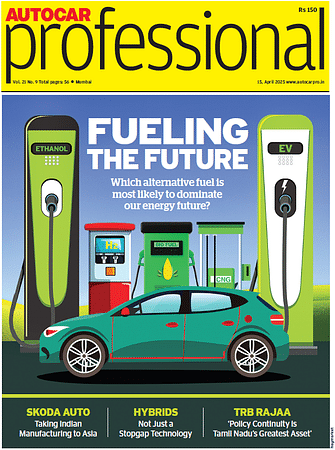Accelerating the EV Revolution: How Government Policies Are Powering India’s Electric Two-Wheeler Boom
Electric two-wheeler adoption accelerates across India as government policies, growing charging networks and financial incentives make sustainable transportation more accessible to consumers.
India is in its EV adoption era and consumers are shifting towards electric mobility. Two-wheelers are at the forefront of this transformation. With the support of government policies, financial aid, and a growing network of charging infrastructure is making EVs more accessible. By finding relevant solutions for affordability, convenience, and much more, India is ready to transform its transportation landscape.
Policies That Are Driving the Change
The Indian government has been promoting electric two-wheelers ensuring they are now an alternative to the traditional vehicles that run on petrol or diesel. The Faster Adoption and Manufacturing of Hybrid and Electric Vehicles (FAME) Scheme is a big step in this direction. FAME scheme was launched in the year 2025, offering direct subsidies for EV purchases and reducing costs for consumers.
The second phase of the scheme was launched in the year 2019, and focuses on public and shared transportation while supporting the expansion of charging infrastructure.
Nonetheless, the government also reduced GST on electric vehicles from 12% to 5% in 2019. Not only this, consumers purchasing an EV also get a tax benefit of up to ₹1.5 lakh on the interest paid. These financial incentives have enhanced cost-effectiveness and made it a good choice for consumers.
State Governments Making an Impact
Apart from central government policies, several state governments have also introduced incentives to pave the path for EV adoption. Delhi government, for example, offers a 15% subsidy on select electric vehicles along with exempting them from road tax and registration fees. Also, Delhi’s aggressive EV policy has boosted new EV vehicle registrations by 16% as of 2023. Many brands such as Rapido, Zypp Electric have adopted e-scooters for last mile deliveries reducing operational costs and contributing to cleaner urban mobility.
Gujarat offers subsidies of up to ₹20,000 for electric two-wheelers, ₹50,000 for three-wheelers, and ₹1.5 lakh for electric cars, making them even more attractive to buyers. These initiatives by the state government are making electric two-wheelers a lucrative option for a broader audience.
Bengaluru is India;s EV capital and has now introduced battery-swapping stations for two-wheelers. This will significantly reduce wait time for charging. Many companies are now offering swappable battery solutions allowing riders to replace drained batteries within minutes rather than waiting for a full charge.
Charging Infrastructure and Its Role in Mass Adoption
One of the main reasons consumers are hesitant to buy EVs is due to the charging infrastructure. We have only 10,000 charging stations in India and there are no charging stations in tier 2 and tier 3. However, the government is actively working to solve this and has now committed to expanding India's charging infrastructure by investing ₹140 crores. The plan is to have a charging station every 25 kilometers along highways and busy routes.
Many private companies are also working along with the government to accelerate the opening of charging stations. For example, Tata Power has set up over 4500 charging stations across India, helping build consumer confidence in EV adoption. Hero MotoCorp in collaboration with Ather Energy is making an interoperable fast-charging network to support multiple brands. Not only this, BPCL has also committed to installing around 7000 EV charging stations by 2025, ensuring easy access to consumers.
India’s Shift Towards Electric Two-Wheelers
The two-wheeler segment in India has witnessed rapid growth due to all these major initiatives. By the year 2022, over 1.3 million electric vehicles were registered across the country and most of them were two-wheelers. This trend marks the widespread adoption of EV adoption across the country and a major shift in consumer preferences along with positive factors like affordability and environmental benefits.
The industry is now rapidly innovating to improve battery technology, efficiency and trying to make EV more cost effective. Developments in trying to reuse, recycle and be less dependent on imports will enable India to reduce the cost of EVs.
One of the most significant advantage of EV adoption is the low running cost compared to petrol scooters. On average, an electric two-wheeler costs around ₹0.25-₹0.30 per kilometer, whereas a petrol scooter costs around ₹2-₹2.50 per kilometer. This means huge savings for daily commuters in the long run. Also, this is a lucrative option for delivery riders as it would reduce delivery costs remarkably.
The Road Ahead for Electric Two-Wheelers
While India is accepting EVs and there has been substantial progress there are still a lot of challenges. The initial cost of buying an EV two-wheeler is still a consideration for some buyers as the purchasing cost is higher in comparison to an alternative fuel-powered vehicle. However, the running cost of an EV remains low along with other environmental benefits.
There is a need to create a standardized charging infrastructure as well. However, with government support and rising consumer awareness EV two-wheelers are positioned for long-term success.
Yogesh Bhatia is MD and CEO at Lohia Machinery Limited. Views expressed are the author's personal.
RELATED ARTICLES
Optimising EV Powertrains with Simulation for Efficiency and Performance
Exploring the Role of Powertrain Optimization, Simulation Technologies, and Market Drivers in Shaping the Global and Ind...
Opinion: Air Suspension Isn't Always the Best Option
High-tech is not always better. Often, simple tech gets the job done just as well.
Dark Edition SUVs: Striking Aesthetic or Problematic Messaging?
Black often lends cars a menacing look, but does the marketing lingo have to use overtones of the darker side of life?






 21 Mar 2025
21 Mar 2025
 2050 Views
2050 Views





 Sarthak Mahajan
Sarthak Mahajan


 Autocar India
Autocar India


